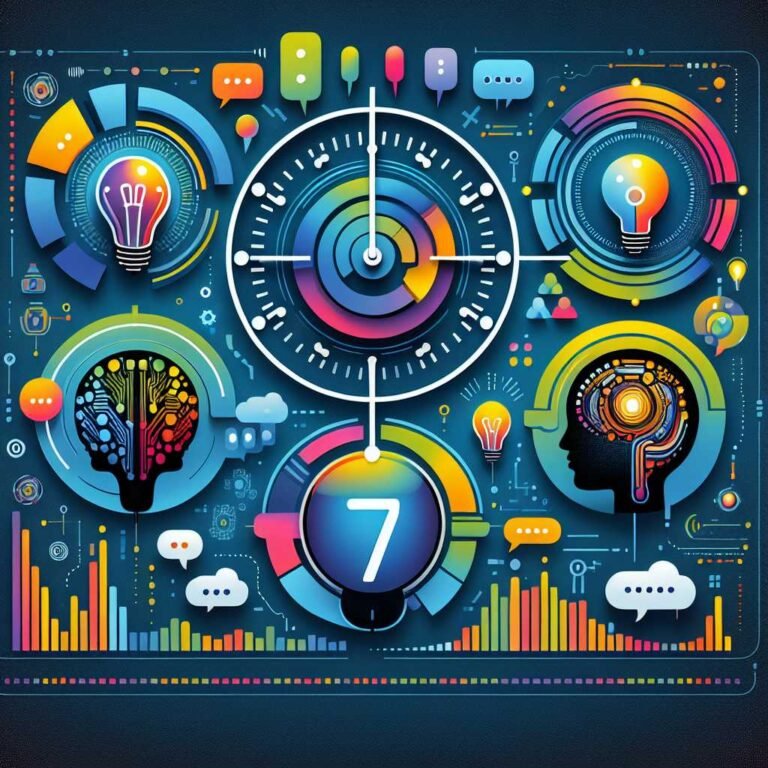How Machines Think: A Beginner’s Guide to AI, Explained in Plain English
Artificial intelligence is everywhere—from the autocorrect on your phone to the tools helping doctors spot disease earlier. Yet the question most people still have is simple and human: how do machines actually think? If AI isn’t magic, what’s under the hood? And how dangerous is it, really?
This beginner-friendly guide walks you through AI the way a smart friend would: no jargon, no math-heavy detours, and lots of practical examples. By the end, you’ll understand how machines learn, how they make decisions, where they shine, where they mess up, and how to evaluate AI tools with a clear head. I’ll also point you to resources—and a standout book—that make the topic truly click.
What Is Artificial Intelligence? Think Recipes, Not Magic
The best way to picture AI is to imagine a recipe. You start with ingredients (data), follow steps (algorithms), taste along the way and adjust (training), and serve a dish (predictions or decisions). Good cooks aren’t born; they learn from trial and error. AI systems do, too.
- Traditional software follows fixed rules. You tell it exactly what to do.
- AI systems learn patterns from examples. You show them enough “this is a cat, this isn’t,” and they infer their own rules.
Here’s why that matters: when problems get too complex to hard-code—recognizing speech, translating languages, spotting a tumor—learning from data beats writing thousands of rigid if‑then rules. Instead of telling a machine what a cat is, we let it discover what cat-ness looks like.
Want to try it yourself? Check it on Amazon.
From Rules to Learning: A Short Story of AI
AI didn’t start with deep learning. Early AI (often called symbolic AI) tried to encode human knowledge directly as logic. It worked for well-defined domains but failed in messy, unpredictable reality. The shift to machine learning—letting algorithms learn from data—was the breakthrough. Then came deep learning and transformers, which scale that learning across massive datasets and unlock abilities like understanding images, audio, and human-like language.
- Symbolic AI: hand-crafted rules and knowledge graphs.
- Machine learning: models that learn from labeled examples.
- Deep learning: multi-layer neural networks that find complex patterns.
- Transformers and large language models: architectures that excel at context and sequence, powering chatbots and content generation.
If you want a grounded view of how this field evolved (and what’s hype vs. reality), the annual Stanford AI Index is a great, data-rich reference.
Curious to go deeper? Shop on Amazon.
How Machines Learn: The Four-Step Loop
Learning in AI usually follows a simple loop:
1) Show examples. The model sees input-output pairs: image → “dog,” email → “spam,” English sentence → French sentence. This creates a training set.
2) Measure error. The model makes a guess. We compare it to the correct answer and compute a loss—how wrong it was.
3) Adjust the knobs. A model has parameters (think: dials). Using algorithms like gradient descent, it nudges those dials to reduce future errors.
4) Repeat (a lot). After many passes, the model finds a configuration that performs well on training data and, ideally, on new data too.
Let me explain why this matters: the magic isn’t in any single step. It’s in repetition and feedback. Like practicing an instrument, small, steady improvements compound into something impressive. If you want a gentle introduction to these fundamentals, Google’s Machine Learning Crash Course is a friendly, free starting point.
What “Thinking” Looks Like Inside: Vectors, Embeddings, and Patterns
Humans think in words and pictures. Machines represent meaning as numbers. A key idea here is the embedding: a numeric vector that captures relationships between items. Words with similar meanings are “closer” in this vector space. That’s how models learn that “king” relates to “queen,” or that “pizza” is more like “burger” than “dictionary.”
- Text embeddings let models measure semantic similarity.
- Image embeddings capture shapes, textures, and context.
- Audio embeddings represent patterns like tone and rhythm.
With embeddings, models can generalize: they recognize a new sentence or image as “similar enough” to patterns they’ve seen. If you’re curious about the nuts and bolts, the TensorFlow embeddings guide lays it out with approachable examples.
Decisions, Not Just Predictions: Classification, Regression, and Generation
Different problems call for different model types:
- Classification: pick a label (spam/not spam, dog/cat).
- Regression: predict a number (house price, wait time).
- Ranking: order items (what shows up at the top of your feed).
- Generation: create new text, images, or audio (chatbots, image generators).
Training happens offline; decisions happen online. The model “learns” from datasets ahead of time and then makes fast predictions when you use it. That split—train vs. infer—is why models can respond in milliseconds.
The catch? Good decisions depend on context and calibration. A 90% spam probability might be safe to auto-block at scale, but a 60% cancer probability needs a second look. Teams rely on evaluation metrics and thresholds to tune that trade-off. For a practical overview of supervised learning and metrics, see the scikit-learn user guide.
Ready to upgrade your understanding? View on Amazon.
Where You Meet AI Every Day
You’ve already used AI today—probably before breakfast.
- Your camera brightens faces and blurs backgrounds.
- Your email filters junk and suggests short replies.
- Your maps reroute around traffic.
- Your streaming apps recommend what to watch next.
In healthcare, models help radiologists spot anomalies. In finance, they detect fraud. In customer service, chatbots triage requests. In labs, models help discover proteins and materials faster than humans alone. For a front-row seat to AI breakthroughs in science and games, the DeepMind blog is worth bookmarking.
Here’s why that matters: when you understand how these systems operate, you can use them more strategically—lean on their strengths and double-check their weak spots.
The Limits: Hallucinations, Bias, and Brittleness
AI is impressive, but it’s not omniscient. Knowing the limits makes you safer and savvier.
- Hallucinations: Language models can produce fluent nonsense. They predict plausible text; they don’t “look up” truth by default.
- Bias: Models learn patterns in data, including human biases. If the training data skews, so does the output.
- Brittleness: Small input changes can cause big output swings. Edge cases and out-of-distribution data trip models up.
- Data hunger and compute costs: Bigger isn’t always better, but many breakthroughs still rely on huge datasets and energy-intensive training.
The Stanford AI Index tracks both progress and challenges, from benchmarks to environmental costs. Treat AI like a powerful assistant with blind spots, not a sage.
Safety, Ethics, and Responsible AI
Responsible AI is not optional—it’s the backbone of trust. Organizations now adopt risk frameworks, testing for fairness, robustness, and security before deploying systems that impact people’s lives.
- Risk management: The NIST AI Risk Management Framework gives a practical toolkit for identifying and mitigating risks.
- Ethics guidance: UNESCO’s Recommendation on the Ethics of AI outlines global principles like transparency and accountability.
- Regulation: The EU has advanced a regulatory approach to AI; see the EU AI Act overview.
A quick rule of thumb: if an AI output affects a health, financial, or safety outcome, a human expert should stay in the loop.
How to Choose a Beginner-Friendly AI Book (and What to Expect)
If you’re looking for a single resource that ties it all together in clear, story-driven language, a good beginner’s book can accelerate your understanding. Here’s what to look for:
- Clear explanations without heavy math, but not oversimplified.
- Concrete examples, diagrams, and analogies you can remember.
- Coverage of both classic ML concepts and modern large language models.
- Honest discussion of limitations, bias, and safety.
- Practical pointers: try-it-yourself exercises or links to demos.
- Up-to-date publication or revised edition to reflect rapid change.
- Formats you’ll actually use: print for note-taking, eBook for search, audio if you learn by listening.
If you want specs and extras, many listings include edition details, page counts, and sample pages—use those to gauge depth before buying.
See today’s price: See price on Amazon.
Pro tip: skim the table of contents and a random page. If you can explain what you just read to a friend, it’s a keeper.
Try-It-Yourself: Simple, No‑Code (or Low‑Code) AI Starters
You don’t need a PhD—or even code—to get hands-on with AI. Pick one of these and you’ll feel concepts click.
- Teachable image classifier Use Google’s Teachable Machine to create a tiny image or sound classifier in minutes. You’ll see training, validation, and predictions in action.
- Text similarity demo Paste two sentences into a semantic similarity demo on Hugging Face and compare scores. That’s embeddings at work.
- Beginner datasets Download a straightforward dataset from Kaggle and try a simple notebook in Google Colab. Start with Titanic survival or house prices.
- Prompt engineering Experiment with structured prompts in a chatbot: give role, steps, constraints, and examples. Observe how outputs change. You’re learning model steering.
As you try these, keep a journal: what worked, what didn’t, and what you suspect the model learned. That reflection is gold.
If you’re ready to start now, Buy on Amazon.
How Language Models “Think” in Conversations
Large language models (LLMs) like the one you’re reading don’t “understand” like humans; they predict the next word based on patterns in vast text. But with scale and clever training (instruction tuning, reinforcement learning from human feedback), they become useful conversational partners.
- Tokens, not words: Models read text as tokens—subword pieces. More context often means better answers.
- Chain-of-thought: When prompted to “show your work,” models often reason more reliably, step by step.
- Tool use: With plug-ins or function calling, a model can use calculators, search, or databases—bridging the gap between fluent text and grounded answers.
Reality check: LLMs are probability engines, not fact databases. To reduce errors, pair them with retrieval (searching approved sources) or tools. For more on frontier research, explore OpenAI research.
When to Trust AI—And When to Double-Check
Use AI confidently for brainstorming, drafts, summaries, and pattern spotting. Double-check when facts, safety, or fairness are at stake.
Trust more when: – The task is low risk, like rewriting an email. – You can verify outputs easily. – You have redundancy (another model or a human critique).
Verify more when: – The decision impacts people significantly. – Data quality is uncertain. – You see confident but rare claims (classic hallucination territory).
A small habit with a big payoff: ask AI to cite sources or show reasoning. Then validate a claim with an authoritative link.
What the Future Likely Brings (Without the Hype)
Expect steady, practical improvements: – Better grounding in tools and real data. – More efficient models (cheaper, greener). – Stronger guardrails and evaluations. – Niche models specialized for domains like law, medicine, and education.
There will be leaps—surprise capabilities often emerge at scale—but the day-to-day reality will be systems that are a bit more helpful, a bit more reliable, and a lot more embedded in everyday tools.
For a balanced mix of optimism and caution, watch the evolving guidance from NIST and the empirical trends in the AI Index.
FAQ: Beginner Questions About How Machines Think
Q: What is AI in simple terms? A: It’s software that learns patterns from data and uses them to make predictions or decisions. Instead of rules written by a programmer, it figures out its own rules from examples.
Q: What’s the difference between AI, machine learning, and deep learning? A: AI is the broad goal of making machines act intelligently. Machine learning is a subfield where systems learn from data. Deep learning is a subset of ML that uses multi-layer neural networks for complex pattern recognition.
Q: How do neural networks work? A: They’re layers of simple math units (“neurons”) that transform inputs into outputs. The network adjusts connection strengths (weights) during training to reduce error. After training, it can map new inputs to useful outputs.
Q: Are large language models conscious? A: No. They’re pattern predictors trained on text. They can simulate conversation, but there’s no evidence of self-awareness or subjective experience.
Q: Why do chatbots hallucinate? A: They generate likely-looking text, not guaranteed truths. Without retrieval or verification, they can produce confident but false statements.
Q: Can AI be fair? A: Fairness is a design choice and a process. Teams can audit data, test for bias, and apply constraints—but no system is perfectly fair for all contexts. Frameworks like NIST’s AI RMF help.
Q: How can I start learning AI with no coding? A: Try no-code tools like Teachable Machine, explore demos on Hugging Face, and read a beginner-friendly book to build intuition. Learn the concepts first; code later.
Q: Will AI take my job? A: AI will change tasks within jobs more than it will erase entire professions. Roles that combine domain expertise, judgment, and human interaction are resilient. Learning to use AI well is a career advantage.
Q: Where can I follow trustworthy AI news? A: Look to primary sources and research labs: DeepMind blog, OpenAI research, and the data-driven AI Index.
The Bottom Line
Machines don’t “think” like us—they learn patterns from data, represent meaning as numbers, and make probabilistic decisions. Once you grasp that, AI becomes less mysterious and more like a powerful tool you can question, steer, and use with intention. Your next step is simple: try a small hands-on demo, read one chapter that deepens your intuition, and build the habit of verifying claims. If you found this helpful, stick around for more practical explainers and real-world guides—we’re just getting started.
Discover more at InnoVirtuoso.com
I would love some feedback on my writing so if you have any, please don’t hesitate to leave a comment around here or in any platforms that is convenient for you.
For more on tech and other topics, explore InnoVirtuoso.com anytime. Subscribe to my newsletter and join our growing community—we’ll create something magical together. I promise, it’ll never be boring!
Stay updated with the latest news—subscribe to our newsletter today!
Thank you all—wishing you an amazing day ahead!
Read more related Articles at InnoVirtuoso
- How to Completely Turn Off Google AI on Your Android Phone
- The Best AI Jokes of the Month: February Edition
- Introducing SpoofDPI: Bypassing Deep Packet Inspection
- Getting Started with shadps4: Your Guide to the PlayStation 4 Emulator
- Sophos Pricing in 2025: A Guide to Intercept X Endpoint Protection
- The Essential Requirements for Augmented Reality: A Comprehensive Guide
- Harvard: A Legacy of Achievements and a Path Towards the Future
- Unlocking the Secrets of Prompt Engineering: 5 Must-Read Books That Will Revolutionize You







